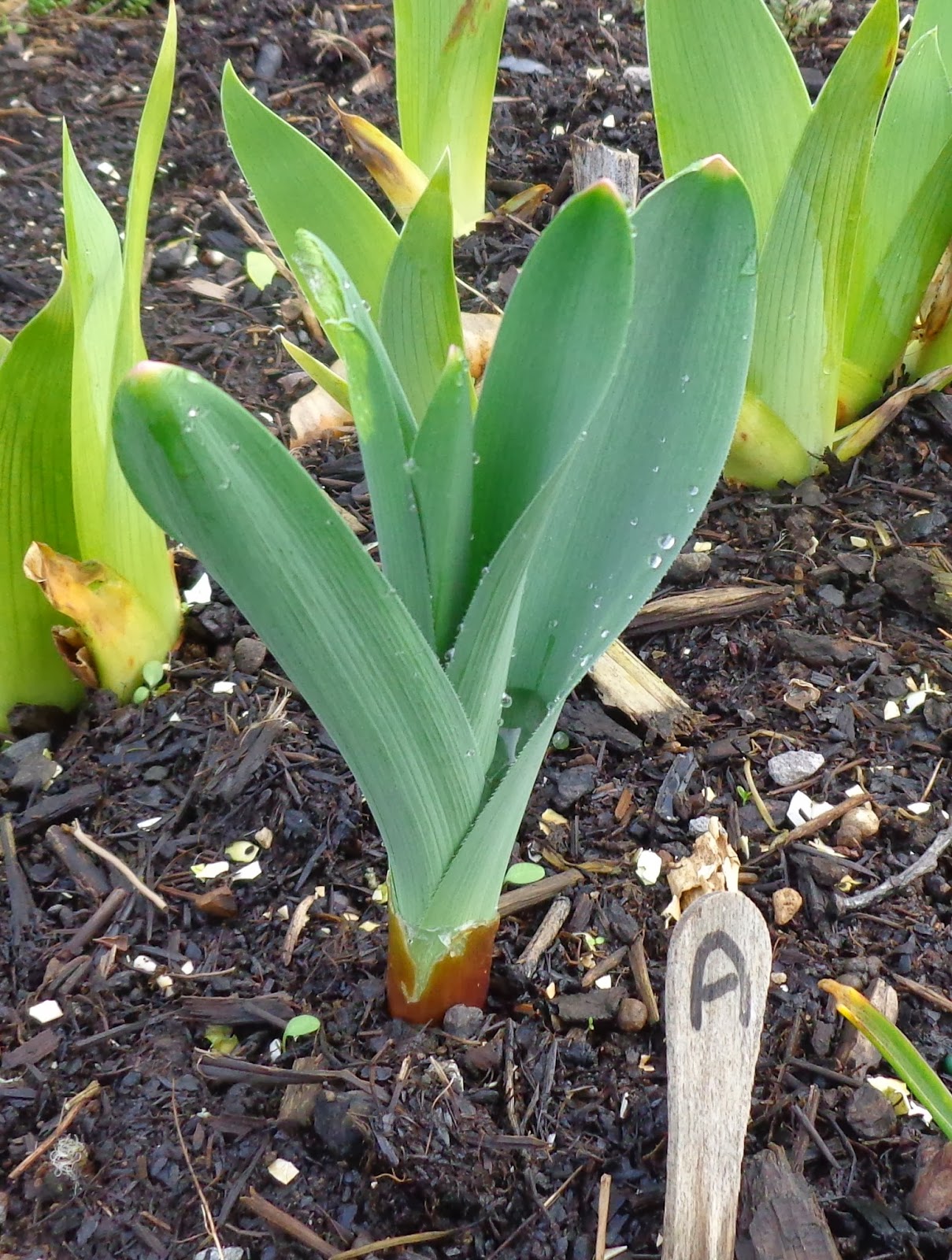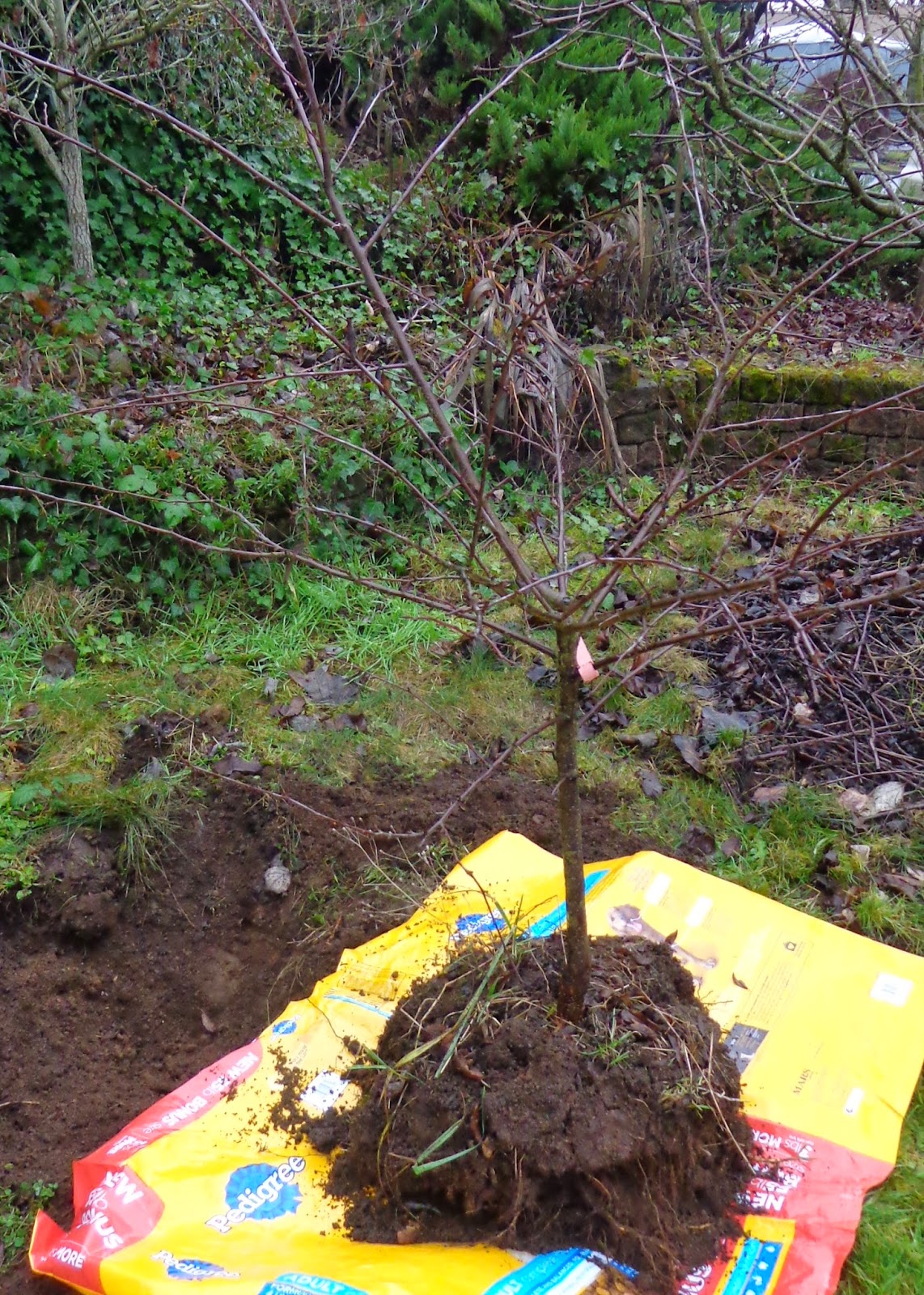 |
| Transplant Methley Plum. Jan 2014 |
This is Jan to June. It turned out to be too much to review the whole year.
Transplanted Methley plum tree in January. It did fine, but no plums this year. January is a good time to transplant around here, if the roots are good and the weather is mild.
Lilacs are really easy to propagate by digging up suckers, pruning them off, and replanting. All survived. Again, dug them in January. All of the starts grew moderately and developed good root systems.
Covering the raised beds with plastic increased the temp, allowing for cold season vegetables to grow in February.
Embossable labels work better than any other type of label.
Pepper plants started about Jan were the first to bear. They do not have to be started that early, but it was nice to get early peppers.
Whip and tongue grafting is easy and awesome. That was the end of Feb. All of the pears, and all of the apples, took. Few or none of the lilacs took. Lilacs are more challenging to graft. I still don't have a foolproof method for them.
It was easy to
dig up and transplant daffodils and Hyacinthoides right after they started to grow in March. All survived and bloomed. It was a great way to have some instant spring blooming bulbs, not planted the fall before. Not really instant but seemed that way. Waiting until the foliage dies is probably better, but there is so much going on then, I forget.
The
indoor plant growing light was easy, cheap, and worked very well. I have it set up again for this winter's seedlings.
Learnings for the little orchard:
Deer were the most destructive and frustrating challenge. They ate cherry trees, to the point of almost killing the trees. I already had the plum trees fenced, so they were OK. They ate a few peach branches, not a lot. Similar for persimmons. Something - maybe a rabbit - ate off one pawpaw sapling, so all got caged. As of now, all cherries are caged, all pears, apples, plums, pawpaws, persimmons.
Two trees died - Satsuma plum and Korean Dogwood. I think that's because I did not get the roots unwound from the containers. Another thought, is voles, but on the tree autopsy I did not see eaten roots. Lesson learned - get those root systems spread out. I already knew that but did not practice it in those cases. Hollywood plum was very easy to start from cuttings - all grew. Shiro plum did not grow at all from cuttings. With hand cross-pollinating, the Asian pears had heavy yields, really productive, for the first time ever. By grafting pollinating varieties within each pear tree, I hope the pollinating is easier in the future. But I really didn't mind doing it. Enjoyable. I have almost every tree in a fencing circle to reduce or prevent deer browsing next year. Lesson learned - install the fencing at the time the trees are planted, even before planting. Then it is done, and you don't wind up saying "I wish I did that".
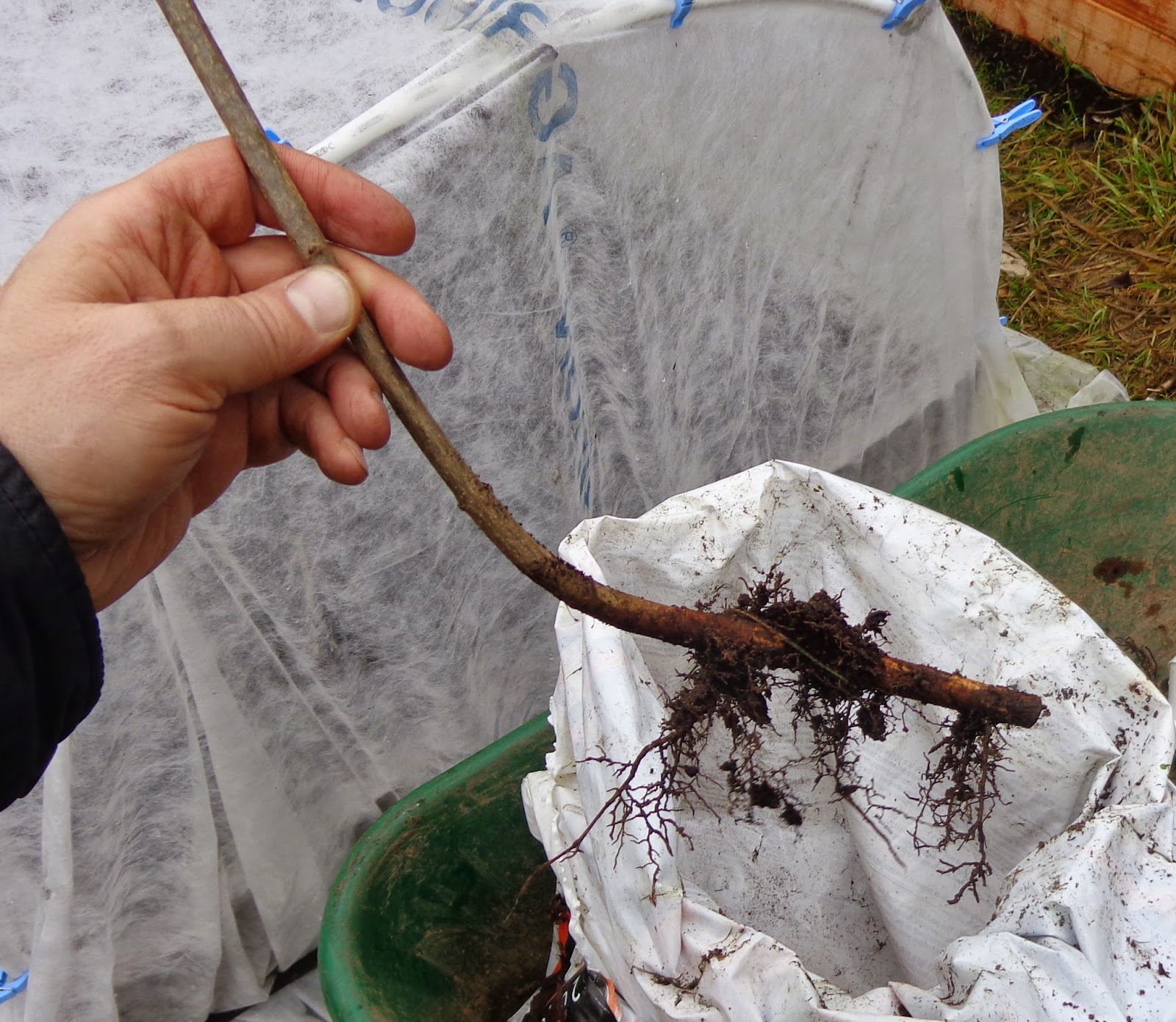 |
| Lilac Propagation via Suckers. Jan 2014 |
 |
| Covered Bed. Feb 2014 |
 |
| Pepper plants, 2.1.14 |
 |
| Asian Pear - Whip and Tongue Graft. 2.25.14 |
 |
| Apple. Whip and Tongue Graft. 2.25.14 |
 |
| Bulb transplants. 3.2.14 |
 |
| Plant light project. 3.2.14 |
For me, the best way to grow 4:00's /
Mirabilis jalapa, was to soak seeds for 24 hours, pre- germinate seeds on moist paper towel, in zipper sandwich bags, on heating mat, then plant into seedling cups. They did really well that way. 4:00's were great fun and I will grow them again this year, from seeds saved in 2014. They do stop blooming in Sept, but that's OK. They also grew faster, bloomed sooner, and stopped blooming sooner, in containers.
The bearded irises were very frustrating. Big, very frustrating, losses from bacterial rot. Almost every plant had at least some rot. A few were completely killed. May have been due to too much nitrogen the fall/winter before. Lesson learned. No nitrogen boost this time around. Also no ground covers, although weeds are challenging for bearded iris. We'll see if they do better this time around.
Lilacs did great this year. It's nice to have several types. Now I have starts from 5 colors, at the Battleground place. Bud grafting was about 30% successful on lilacs. Maybe - we'll see if they grow.
Bud grafting is also awesome. Some of the early bud grafted plums grew rapidly. The later ones, healed but I will not know if they grow, until Spring. All of the plum bud grafts look like they took. About 75% of the cherries look good. Not sure about the peaches, and the lilacs may have a few.
The
buddleias were a mixed bag. The "Cobbler" varieties - Peach Cobbler and Blueberry Cobbler - grew huge. That was OK in that location, they will be a bit of a windbreak. The flower heads are also huge. They start blooming from the bottom, and work to the top. That means, most of the time half of the flower is brown and dead, before the rest is done blooming. The result is an ugly bush. The "Miss" varieties - Miss Molly and Miss Ruby - those have smaller flowers, and less of the half dead/half blooming issue. They are more compact. Neither the Cobbler varieties, nor the Miss varieties, attracted honeybees, but they were good for bumblebees. The Honeycomb variety was newer, I'm not sure about that. The Blue Mist variety stayed more compact, the flower heads were small and much less of the half-dead aspect, looked very nice and the honeybees liked it.
Peecycling was the big lesson this year. Excellent source of nitrogen. Our water bill decreased due to not flushing it down the drain. Tomatoes were the most productive ever. Peppers did excellent. Lindens grew their most lush ever. Negatives, leaves on some buddleias, and laburnum, were curled. I used moderately on the Bearded Irises, and that may have been the issue with the bacterial rot. Possibly too much on those. I would not use on pear trees - they grow too fast, and lush growth is susceptible to fire blight. Sourwood also had a touch of fireblight, but recovered and grew nicely. I think this concept is mostly a "guy thing". We have been saving all of the at-home pee for the garden, and it was very lush in 2014, the best ever.
 |
| Plant light project. 3.2.14 |
 |
| Orchard. 4.6.14 |
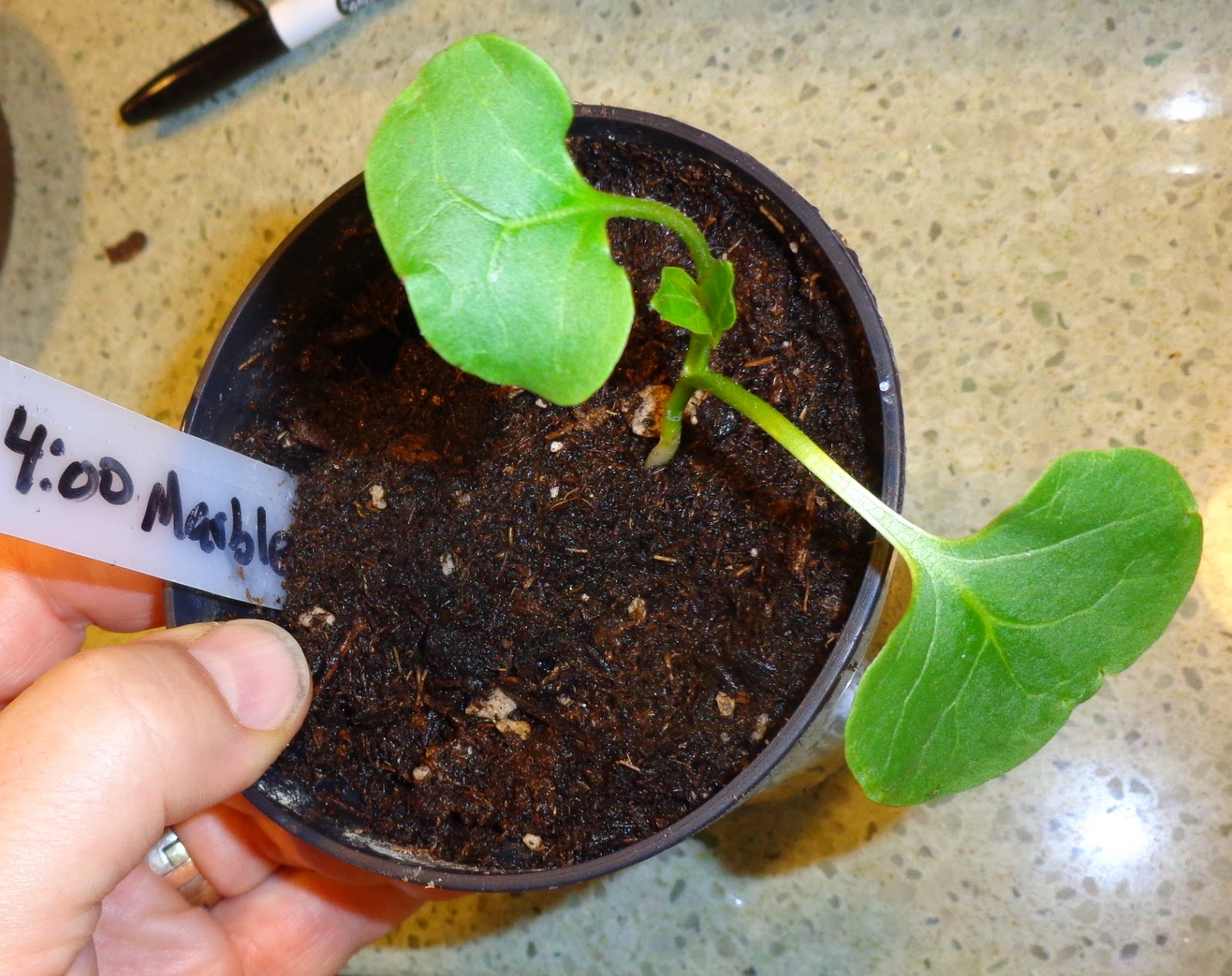 |
| 4:00 seedling. 4.6.14 |
The
persimmons and pawpaws did respond to the nitrogen boost. I would not do that for mature trees, but it might be good for getting them larger, faster.
I still have a lot to learn about growing
okra in this cool maritime climate. The container okras did much better than last year's in-ground okra. The varieties, "Burgundy" and "Baby Bubba" did best. They are hard to grow in sunroom due to attracting aphids. It helps to soak seeds over night, and pre-sprout on moist paper towel / zipper sandwich bag / on seed sprouting warming mat.
Contrary to info on many websites, okra is easy to start in containers. You just have to be careful to slide them out of the container without damaging roots, when transplanting. More to learn, but so far, so good.
This as a lot of learnings in 6 months. Most of it went well. I tend to forget the unsuccessful things. The uncertainties to carry over to next year, mainly working on other herbivore control fencing, seeing if bearded irises will be free of bacterial rot, getting more okra in containers. I plan to move more bulbs in March after they start growing, as I did last year. Good to know that works. Lilac starts are now in their permanent locations. Much more grafting this year, based on last year's learnings.
 |
| Historic lilac bed. There were some good flowers despite a bacterial rot epidemic. |
 |
| It' nice having multiple varieties of lilacs. The different colors make for a beautiful bouquet. |
 |
| This was my first try for camassia. Very nice! |
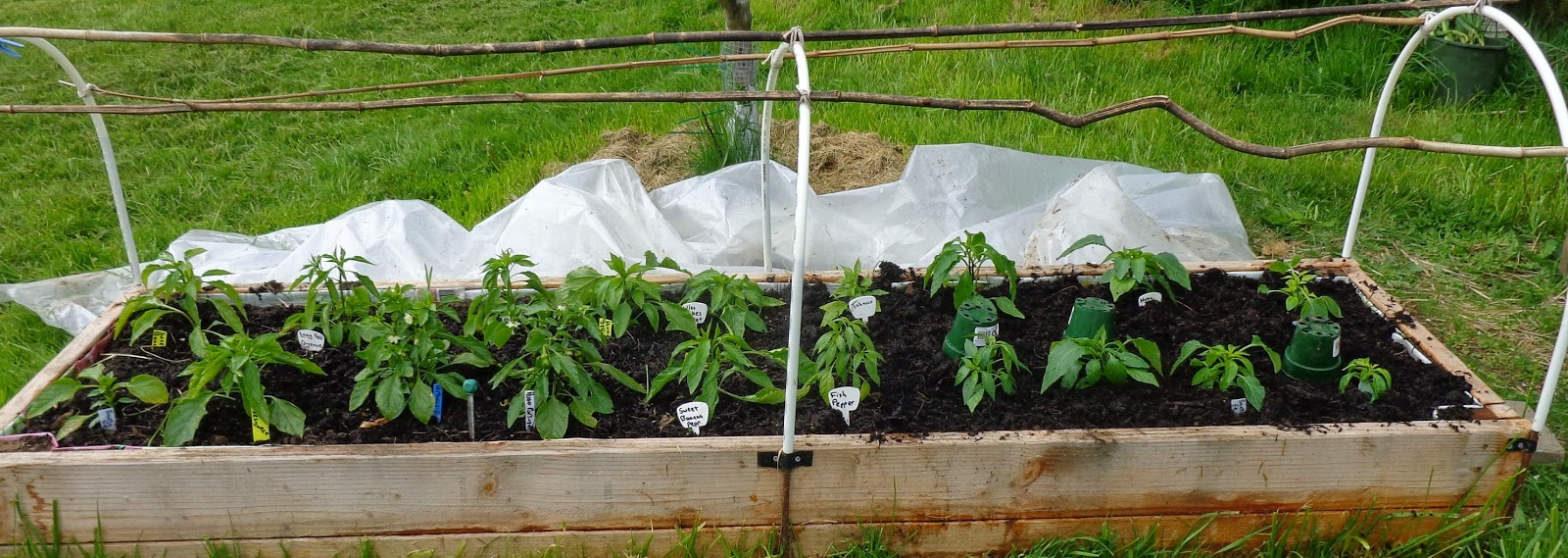 |
| Pepper bed worked out really nice. The cover kept them growing before the weather warmed up. Covering also prevented herbivory. |
 |
| Potato "wells" were OK, not great. Not sure if I will do that this year. |
 |
| Freeze killed figs grew back from the roots. |
 |
| Okra was OK in containers. Not lush like southern grown okra, but there was enough for some soups. |
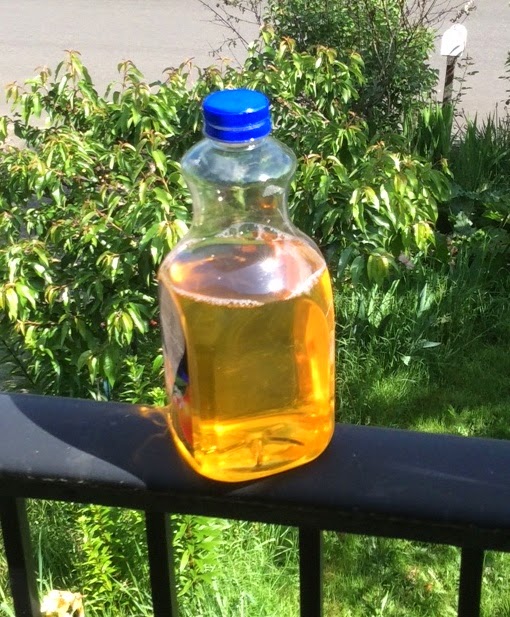 |
| Peecycling was a big new lesson. We got excellent results. |
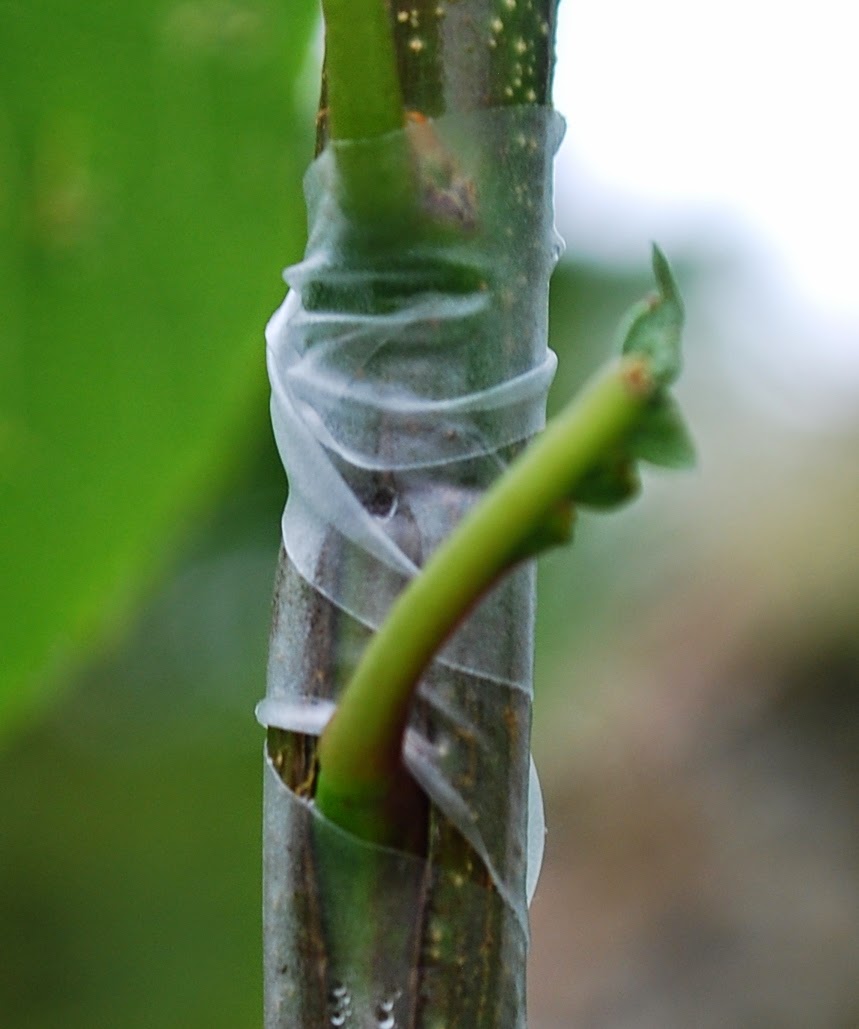 |
| This plum bud graft took and grew rapidly. |
 |
| Four O'Clocks were a new experiment. They were great! |
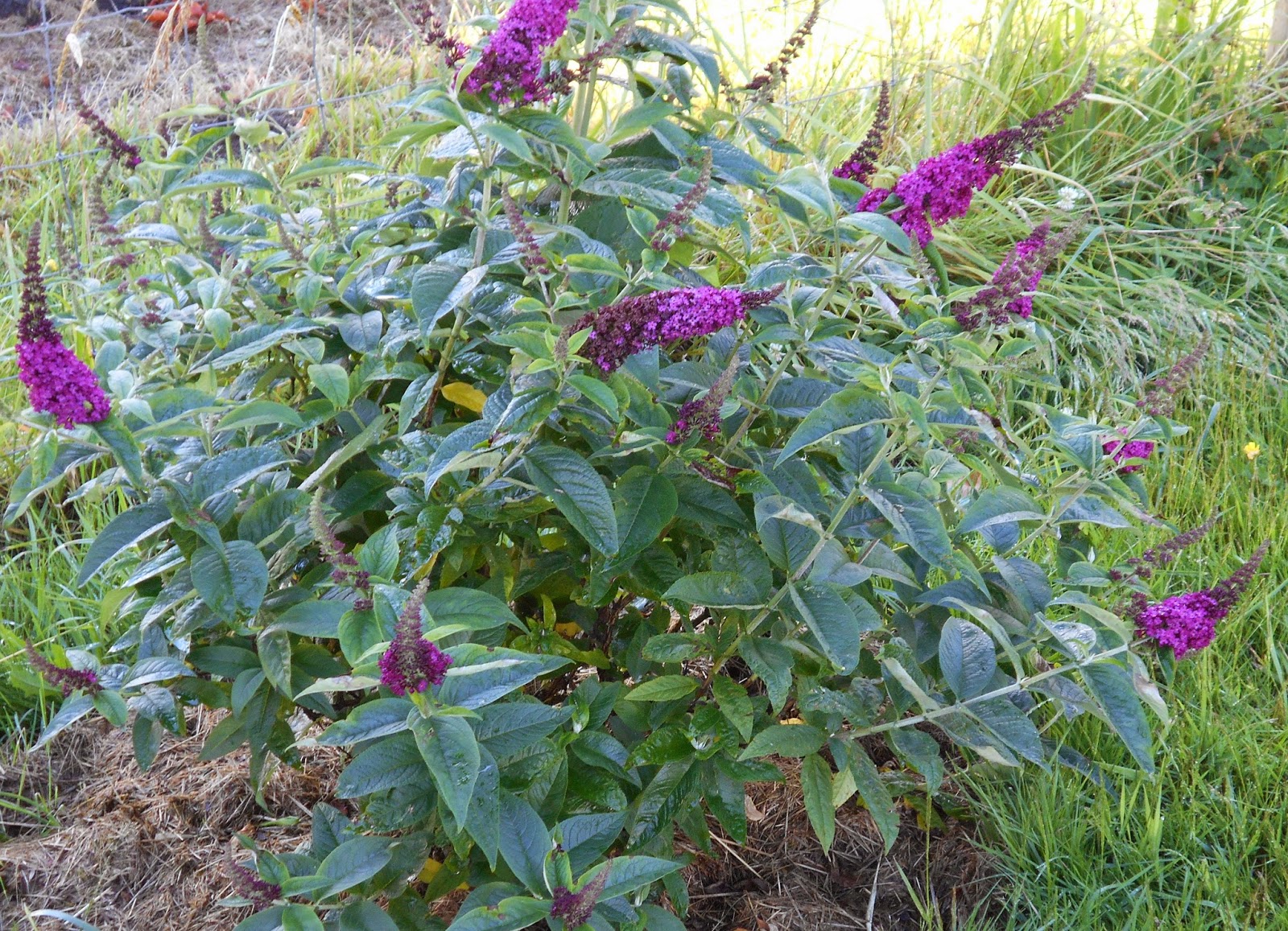 |
| Buddleia Miss Ruby was good. Compact and a nice bloomer. |














































